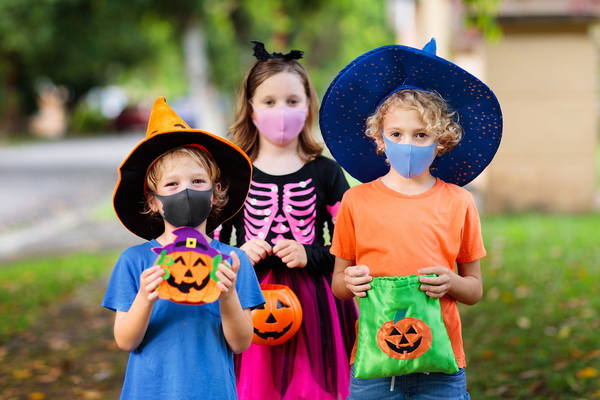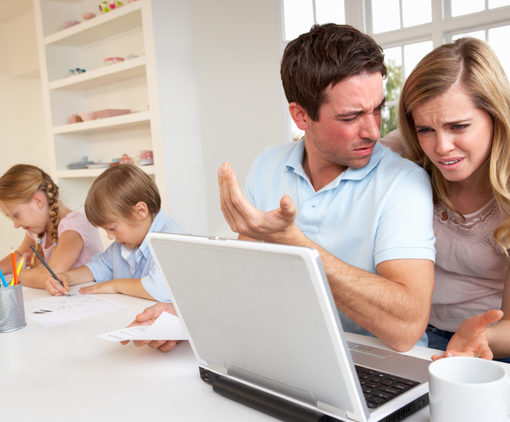Halloween is meant to be scary in a fun way, but parents have a lot of real, not-so-fun reasons to be scared on Halloween.
The whole point of trick-or-treating is to solicit candy from strangers – what if your child receives tainted candy? Or eats something they’re allergic to? What if they’re walking in the road and get hit by a car? What if they’re accosted by bullies?
If you have slightly older children, you might worry about them falling under a bad influence. What if your child decides to join their friends in smashing pumpkins or egging houses – or decides to try alcohol or drugs at a Halloween party? Sure, most people have a fun Halloween night and come out of it no worse for the wear, but there’s always the chance of something bad happening. That’s why parents tend to give their kids a lot of rules and guidance about keeping themselves safe when they go out for Halloween.
This year, many parents don’t have the usual fears, because their kids won’t be going out for Halloween. Thanks to the COVID-19 pandemic – a pretty scary thing in and of itself – many families feel the risk of trick-or-treating or Halloween parties is just too high, and they’ll be staying home instead.
After all, what could happen in the safety of your own home?
Your child will most likely spend the evening playing video games, watching movies, or chatting with friends online instead. But it’s important for parents to realize that online activities can pose dangers as well, even when your child is safely in their own home.
Take a look at some tips that can help you protect your child from online dangers this Halloween.
Halloween Rule #1: Be Cautious Around Strangers
When your children are small, you drill it into them that it might be dangerous to talk to strangers. Even on Halloween, you probably warn them to be careful about the people they talk to – you might tell them to stick to their own neighborhood, remind them to only knock on doors that have lights on, to stay with a group of people who they know and trust, and maybe even to avoid certain houses where you’re suspicious of the occupants – all to protect themselves from the potential of danger from someone they don’t know and trust.
The same concept applies online.
Kids often don’t realize the potential danger of talking to people who they don’t know personally that they meet online. After all, they’re in their own homes, just looking at a screen. What could happen?
A lot of things could happen.
Some adults online target children, attempting to befriend them for nefarious purposes. Some are predators, some are scam artists, some have other agendas, but they all seek to exploit the naivety and inexperience of children and teenagers for their own purposes.
Young children should be taught only to connect with people online if they already know those people in real life. Friend requests and messages from strangers should be deleted and blocked.
As your child grows older, it might be more reasonable for them to make friends online, but they should still steer clear of overtures from adults or teens who are obviously much older than them, of people who reach out to them despite having no obvious connection to anyone they know, and of anyone who tries to get too personal too fast.
Make sure that your child knows how to block and report unwanted contact on any site they use, and teach them to avoid revealing personal information, like their real name, address, or school, to anyone they don’t know, even if they seem harmless.
Halloween Rule #2: Be Wary of Free Stuff
Halloween is all about getting candy for free, and in the vast majority of cases, that’s fine. But in most other contexts, it pays to be a little suspicious of anything you’re getting for free. Remember, if it seems too good to be true, it probably is.
The internet, especially, is full of free stuff that isn’t really as no-strings-attached as it may seem.
Some free games and apps are loaded with viruses or malware that can damage devices and compromise privacy. And even the most reputable free online activities can have a shady side – for example, many widely-used social media sites collect a user’s data and then sell or share that data with third parties for the purposes of advertising and marketing.
Kids don’t necessarily understand the implication of data collection, so it’s up to you as the parent to teach your children how to safeguard their privacy online and opt-out of sharing their information whenever possible.
Halloween Rule #3: Know When to Ask for Help

When your child goes out trick-or-treating or your teen leaves for a Halloween party, you might tell them to stay in your neighborhood so they can get home quickly if they need to. If you have young children, you probably go with them – you might let them ring the doorbells themselves, but you stay close behind in case there’s a problem and you need to intervene.
The same should be true online.
While the internet can be fun, your child might also encounter anything from trolls and cyberbullies to online predators. Small children should use the internet with adult guidance – you should stay close by and monitor their activity in person so that you can jump in when necessary.
As your child gets older, you can afford them more privacy and freedom, but you should also impress on them the importance of coming to you or another safe adult when they encounter a situation that makes them uncomfortable. And as the parent, you should still check in on their activity from time to time, just to check for red flags that your child may not see.
Parental monitoring software can help you ensure that your child’s online experience remains safe and fun, at Halloween and at every other time of the year. To find out more about how computer and mobile monitoring software can help you keep your child safe, get our free trial.





